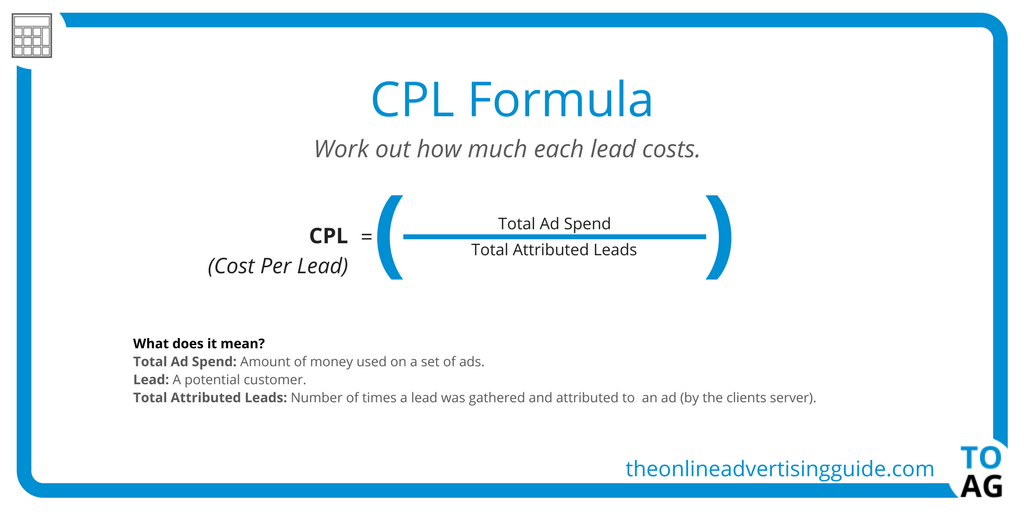Overview
Whether you are creating brand awareness, generating leads, or increasing sales, you can use paid online ads to achieve your marketing goals.
Facebook, LinkedIn, Google, Twitter, and other platforms charge advertisers for online ads using similar pricing models. These pricing models allow marketers to pay when internet users complete specific actions related to their ads. Also, they serve as metrics to measure marketing campaign effectiveness.
According to Think with Google, 89 percent of top marketers use vital metrics to measure campaign effectiveness.
Understanding these pricing models is critical to developing an effective marketing strategy and campaign budget.
In this article, we will show you how to calculate three major pricing models and campaign metrics.
1. Cost Per Click (CPC)

Image Credit: NeONBRAND
The CPC pricing model charges the advertiser when an internet user clicks their ad. The clicks could be a link to the advertiser’s website or app store, a product page, or form. It could also be a link to maps, link to audio or video, link to download files, etc.
A CPC campaign works best when your marketing objective is to drive traffic to a specific landing page.
You can calculate CPC by dividing the advertising cost by the number of ad clicks.
CPC equals advertising cost or budget divided by the number of ad clicks.
For instance, if you are running a marketing campaign and you set your campaign budget at $5,000. If the total number of clicks on the ad is 100. Your Cost per Click will be $5,000 divided by 100 to give you 500 dollars. That means that each ad click cost 50 dollars.
If you know the minimum cost per click for an ad. you can use this formula to determine your budget.
Advertising budget = CPC x Number of Ad clicks
While setting up your campaign, Facebook allows you to set your daily budget automatically. You can also manually your daily budget, and you will get the estimated number of expected clicks.
Similarly, Google CPC, also called Pay Per Click, allows you to select your bid amounts (manual bidding). Google can also automatically set bids to help you get the most clicks within your budget (Automatic bidding).
Twitter and LinkedIn also allow you to customize your cost per click and ad budgets.
Your CPC depends on several factors, including ad duration and budget, target audience and location, ad design, and ad relevance to your target audience.
2. Cost per Lead

Image Credit: Pinterest
Cost per lead is another pricing model where the marketer pays for each new lead or prospect.
Leads or prospects are potential customers who have shown interest in your product or services.
Lead acquisition activities may include getting data or contact information via forms, newsletters, or subscriptions. The goal of acquiring leads is to use the information to convert them into paying customers.
The CPL metrics helps you measure your marketing return on investment (ROI). Also, it enables you to define your most valuable lead acquisition channel.
You can calculate CPL by dividing the advertising cost by the number of leads generated.
CPC equals advertising cost or budget divided by number of leads acquired.
For instance, if your marketing campaign costs 8000 dollars, and the total number of leads generated is 100. Your Cost per lead translates to 8000 dollars divided by 100 to give you 80 dollars. That means that each lead generated cost 80 dollars.
Facebook, Google, LinkedIn, Instagram ads provide campaign tools to help marketers collect leads for their business.
3. Cost per Action or Acquisition

Image Credit: Pinterest
The Cost per pricing model charges the marketer when there is an acquisition or positive customer action. The marketer pays when a customer completes a purchase on your website, newsletter signup, registration, or app download.
This model is a crucial success indicator and a measure of marketing campaign effectiveness.
It directly measures the cost to acquire each customer.
Cost per acquisition (CPA) is calculated by dividing the advertising cost by the number of acquisitions or actions on the ad.
CPA equals advertising cost or budget divided number of acquisitions or Conversions
For instance, if you are running a marketing campaign and your ad spend is 6000 dollars. If the total number of acquisitions is 100. Your CPA will be 6000 dollars divided by 100 acquisitions (6000/100) to give you 60 dollars.
CPA is a suitable model if your marketing campaign objective is to
- Generate leads through newsletter signups, product registration
- Increase sales by encouraging people to take a specific action on your site, such as making a purchase, app download, or adding items to the cart.
Facebook, Google, LinkedIn, Instagram, and Twitter ads allow you to choose campaign objectives that will help you acquire customers and convert leads.
Tools Used to Calculate CPC, CPL, and CPA
Based on your campaign objective, you can view your CPC, CPL, and CPA on your Google and Facebook ad dashboard. You will also find other metrics, such as Clickthrough rates and Cost per Impression.
You can use apps and tools to calculate your campaign metrics. Some of them include:
Start Measuring Your CPC, CPL, and CPA
Monitoring and evaluating your digital campaign metrics is a key component of an effective marketing strategy. Furthermore, it helps you to measure your marketing effectiveness and ROI. You should use these tools to measure your campaign and make data-driven decisions that will catalyze business growth. Besides PPC, if you need Facebook marketing or SEO services, please feel free to contact us today.

